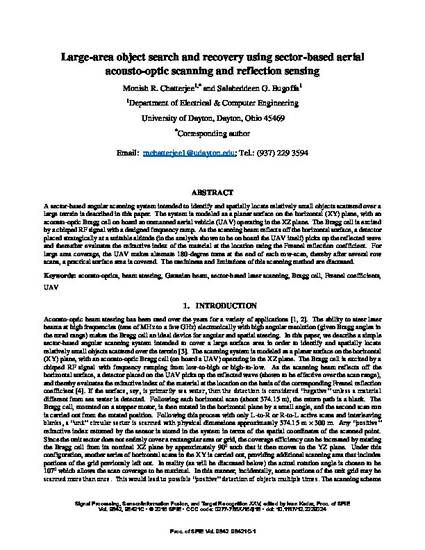
A sector-based angular scanning system intended to identify and spatially locate relatively small objects scattered over a large terrain is described in this paper. The system is modeled as a planar surface on the horizontal (XY) plane, with an acousto-optic Bragg cell on board an unmanned aerial vehicle (UAV) operating in the XZ plane.
The Bragg cell is excited by a chirped RF signal with a designed frequency ramp. As the scanning beam reflects off the horizontal surface, a detector placed strategically at a suitable altitude (in the analysis shown to be on board the UAV itself) picks up the reflected wave and thereafter evaluates the refractive index of the material at the location using the Fresnel reflection coefficient.
For large area coverage, the UAV makes alternate 180-degree turns at the end of each row-scan, thereby after several row scans, a practical surface area is covered. The usefulness and limitations of this scanning method are discussed.
Available at: http://works.bepress.com/monish_chatterjee/59/

This document is provided for download in compliance with the publisher's policy on self-archiving. Permission documentation is on file.
DOI: http://dx.doi.org/10.1117/12.2229024